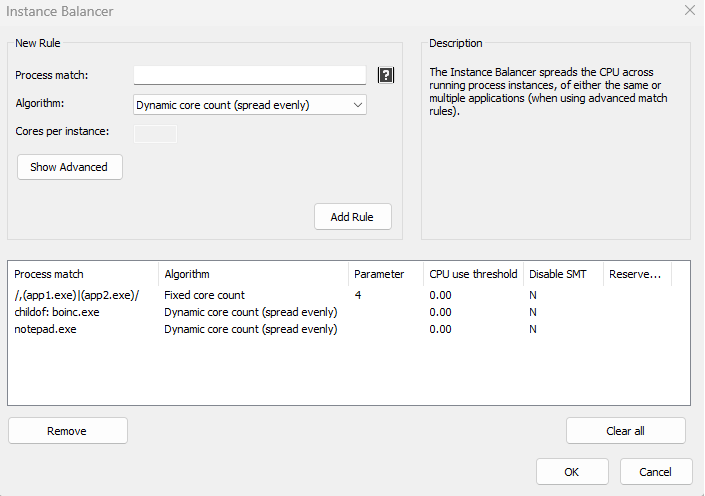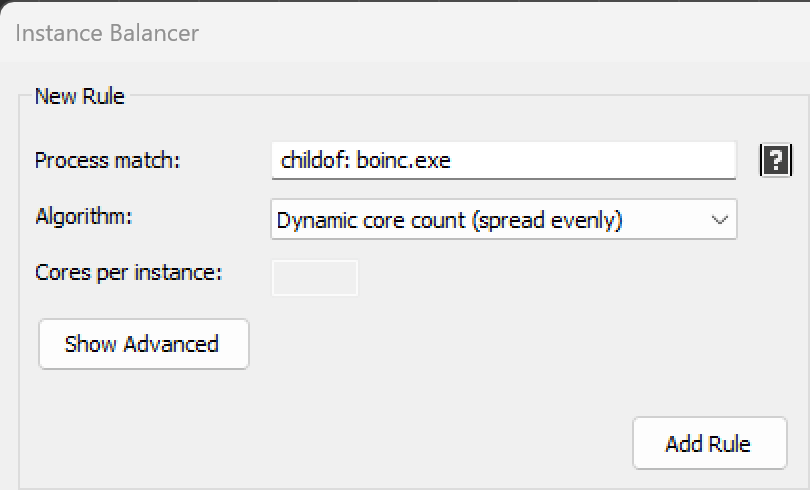
Process Lasso 11.1 – Instance Balancer and Translations
This release extends the Instance Balancer feature, improves translations, and further polishes the v11.0 release last month.
Instance Balancer
Process Lasso’s Instance Balancer is commonly used to spread multiple instances of an application over the CPU, giving each instance a dedicated set of CPU cores. It can also be used to spread distinct applications across the CPU using advanced process match patterns.
We’d previously added a couple new Instance Balancer rule options, namely ‘Reserved cores’ and ‘CPU use threshold’. This release adds another, ‘Disable Hyper-Threading (SMT)’. The new options are described below.
- Cores per instance
- When ‘Fixed core count per instance’ is selected, this is the number of CPU cores that will be assigned to each running instance that matches the rule.
- Reserved cores (optional)
- This is the number of logical CPU cores per processor group to exclude from the set available to instances matching this rule. Users can use this to reserve CPU cores for other system activity. However, most often, this value should simply be 0.
- CPU use threshold (optional)
- This is the minimum percent CPU use required before a matching process is included in the set and Instance Balanced according to the rule. This is useful if you want to exclude instances that aren’t using much CPU. This value can be 0 if you don’t want a minimum threshold.
- Disable HT/SMT
- When checked, physical CPU cores will be selected instead of logical CPU cores. Note that when this feature is used with ‘Fixed core count’ or ‘Reserved cores’, the number of CPU cores specified for those options is still in logical units, so 2 will equal 1 assigned physical CPU.
- Randomize
- This randomly selects CPU cores from the available set instead of sequentially assigning them to each process instance. The purpose is to better spread the load across the CPU topology. This option supports balancing across multiple processor groups, unlike the default of sequential assignment.
For more information, see the full Instance Balancer documentation.
After these additions, the rule configuration dialog became a little cluttered. So, we added an ‘Advanced’ button to hide these new options.


Translations
Process Lasso is available in 15 languages. Over the years, this has been a source of considerable headaches. Aside from the overhead in making the entire product localizable, every string change requires all languages be updated, and every control width must be able to accommodate any language. Finally, translators come and go and languages become out of date. We’ve been working to improve the situation, but at present still recommend people use English for the best experience, if at all possible.
Regardless, this version improves our tooling and includes new work from many translators. If you’d like to contribute to the Process Lasso translation in your language, we invite you to join our project at CrowdIn, a crowd-sourced translation platform. It’s quick and easy!
Discover more from Bitsum
Subscribe to get the latest posts sent to your email.
